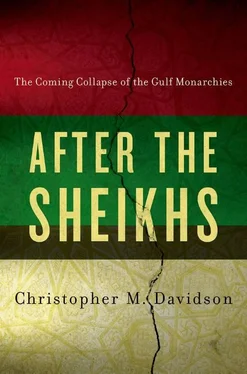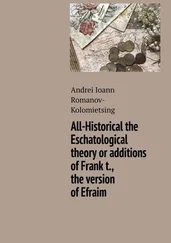The other Gulf monarchies have more modest funds, reflecting their smaller hydrocarbon surpluses. The Investment Corporation of Dubai for example, may have about $20 billion in assets, [189] 133. Officially the Investment Corporation of Dubai holds $19.6 billion in assets. 2012 figures.
but this is unclear given some of the below-mentioned controversies regarding the Dubai government’s ability to make debt repayments. Bahrain’s Mumtalakat Holding Company and Oman’s State General Reserve Fund are even smaller, perhaps less than $12 billion [190] 134. According to Mumtalakat Holdings’ official financial report for December 2011 its total holdings were just over $11 billion. Oman’s State General Reserve Fund is thought to have just over $8 billion in assets.
—and with depleting oil reserves they are unlikely to grow much further. Instead, the fastest growing funds are likely to be the more recently established Qatar Investment Authority — founded in 2006 and now controlling about $60 billion in assets given its access to substantial gas export revenues — and the numerous other sovereign wealth funds in Abu Dhabi that seem to operate in parallel to ADIA. Notable among these are the Mubadala Development Company, which was founded in 2002 under the umbrella of the emirate’s crown prince and which now controls about $15 billion in assets, and the much older International Petroleum Investment Company (IPIC), which has recently been rejuvenated under the stewardship of one of the crown prince’s brothers [191] 135. Mansour bin Zayed Al-Nahyan.
and now controls about $14 billion in assets. [192] 136. Quoting official figures for total holdings supplied in 2011 by the Qatar Investment Authority, the Mubadala Development Company, and the International Petroleum Investment Company.
Nonetheless, despite these substantial overseas investments, there has been a keen awareness in the Gulf monarchies of the need to diversify their economic bases, not only in an effort to reduce their vulnerability to the vagaries of the international oil markets, but also to generate employment opportunities for their fast-growing indigenous populations and to cope with some of the other mounting pressures discussed below. Initially most of the diversification efforts were concentrated on building up heavy, energy-reliant export-oriented industries, all of which relied on the competitive advantage of having cheap abundant energy supplied by the state. Unsurprisingly, it has been the resource-rich states, notably Saudi Arabia, Kuwait, Qatar, and the UAE’s Abu Dhabi that have led the way, often by developing petrochemicals, metals, fertilisers and plastics industries. In Saudi Arabia’s case the biggest player has been the Saudi Arabian Basic Industries Corporation (SABIC), which was established in 1976 to produce polymers and chemicals. Today it is one of the world’s largest exporters of such products, and is also the region’s largest producer of steel. [193] 137. Arab News , 5 October 2009.
Established in 1997, Saudi Arabia’s Maaden was originally focused on developing the country’s gold mines, but has since diversified into the manufacture and exporting of aluminium and phosphate. [194] 138. Khaleej Times , 20 December 2009.
Six new ‘economic cities’ have been inaugurated too, the largest being the King Abdullah Economic City on the Red Sea coast. Containing both a seaport and industrial zone, it is intended to become an attractive, integrated hub for foreign direct investment in Saudi Arabia’s manufacturing sector. [195] 139. Coates Ulrichsen, ‘Saudi Arabia’ in Davidson (2011), p. 78.
Since the founding of the Shuaiba Industrial Zone in 1962, Kuwait’s heavy industries have followed a similar pattern of development. [196] 140. Roberts (2011). p. 102.
Most have concentrated on the exporting of petrochemicals, with others focusing on the production of ammonia, fertilisers, and cement. [197] 141. US Department of State. ‘Background Note: Kuwait’ 2011.
Some of these industrial projects have either stalled or collapsed, often as a result of the aforementioned vibrancy of debate within Kuwait’s parliament. Most notably, in 2008 a multibillion dollar joint venture between Kuwait’s Petrochemical Industries and the American Dow Chemicals — expected to position Kuwait as the world’s greatest producer of polyethylene — was cancelled. [198] 142. New York Times , 28 December 2008.
Qatar’s heavy industries have likewise concentrated on petrochemicals, fertilisers, and steel, with most activity taking place close to the main gas-exporting centres of Ras Laffan and Mesaieed. Most production is in the hands of Qatar Steel, the Qatar Primary Material Company, and Industries Qatar — which are second in the region only to SABIC. Abu Dhabi’s most prominent downstream industrial companies are Fertil (established in 1980 and co-owned by ADNOC and Total), [199] 143. Oxford Business Group , ‘Abu Dhabi: The Report 2007’. p. 202.
the Abu Dhabi Polymers Company (established in 1998), [200] 144. Also known as Borouge. Oxford Business Group , ‘United Arab Emirates: The Report 2000’. pp. 94–95.
and Emirates Aluminium (EMAL). The latter now operates the world’s largest aluminium processing facility on Abu Dhabi’s manmade Taweelah island. [201] 145. Oxford Business Group , ‘Abu Dhabi: The Report 2007’. p. 212.
Over the next few years the sector is set to expand further, with both Mubadala and the Abu Dhabi Basic Industries Corporation (ADBIC) planning to build massive new aluminium plants. [202] 146. The latter being built at Ruwais in co-operation with Rio Tinto. The National , 24 July 2008; Seznec (2008), p. 101.
And by 2013 Abu Dhabi’s IPIC will have built a new Chemicals Industrial City: capable of producing 7 million tonnes per year of aromatics and ammonia derivatives, it will be the world’s largest such complex. [203] 147. Borealis press release, 19 March 2008.
The government has put its full weight behind these developments, having increased spending on industrial infrastructure by over 400 per cent over the past decade. By the end of 2012 it promises the completion of the $7 billion Khalifa Port and Industrial Zone on Taweelah [204] 148. Gulf News , 1 March 2012.
and has committed a further $8 billion for other sector-specific infrastructure projects. A new unit — ZonesCorp [205] 149. Also known as the Higher Corporation for Economic Zones.
—has been set up to administer these new districts, provide organisational support, and build residential camps for labourers. [206] 150. Davidson (2009), chapter 4.
Combined, it is expected that the new projects will account for 15 per cent of Abu Dhabi’s GDP by 2030. [207] 151. Gulf News , 1 March 2012.
In parallel to these heavy, energy-related industries, many export-processing zones have been set up in the region. Again there has been significant variation, with most being in the Gulf monarchies which no longer have the competitive advantage of abundant hydrocarbon resources. By providing integrated industrial zones, mostly geared towards small manufacturers and branches of foreign companies, these states have sought to attract foreign direct investment and kick-start import-substitution industries while also creating diverse employment opportunities for their citizens that are not directly tied to oil, sovereign wealth funds, or government services. Crucially, as specially designated ‘free zones’ in most cases they have allowed companies to circumvent the described kafala sponsorship system, and have thus proved popular with multinationals seeking bases in the region unrestricted by domestic legislation.
Читать дальше












